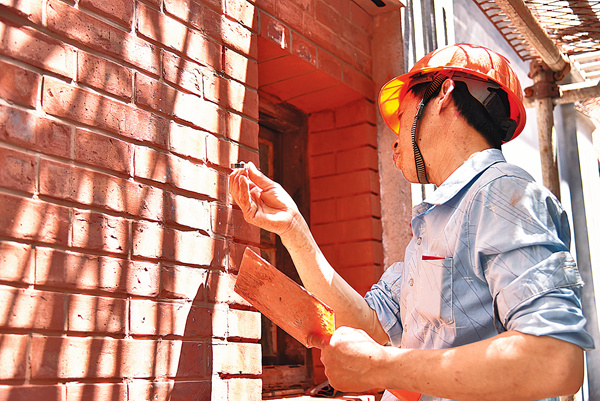

A case in point is the installation of a digital-monitoring system in the Wukang Mansion that helps with the management of the building. The team also had to move air conditioning units to the interior of the building due to safety concerns.
"We preserve traces that tell of the building's history, but remove those that aren't aligned with today's safety standards. Some might think that building restoration is all about replacing the old with the new, but I treasure the imperfections that have been created by either time or human activities," says Gu. "After all, buildings are for people, and it is only through these traces that we can learn about the background of a building."
Professionals like Gu are presently highly sought after as the city has focused on restoring old buildings in the past decade. The supply of such professionals, unfortunately, is unable to keep up with the demand.
"Most architecture graduates today prefer working on new buildings as such careers pay more than those related to restoring old ones,"Gu says. "Also, such restoration skills are still mainly handed down from master to apprentice today, meaning that these techniques will likely be lost eventually as experienced professionals don't have many people to pass on the skills to."
To address this situation, Shanghai Xufang has been cooperating with technological enterprises and universities to broaden the knowledge of this practice.
The company has established a training base where retired restoration experts provide technique training, as well as cultural experience and data management lessons. Lectures, workshops, classes and tests are also held on a regular basis.
"Weeks ago, a retired bricklayer who came to lecture at the workshop told me in private that he was willing to share the craftsmanship manuals he used in the 1950s-which are as precious as archived literature-with the young generations," Gu says. "What is important now is that we preserve not just historical buildings but also the knowledge of restoring them."